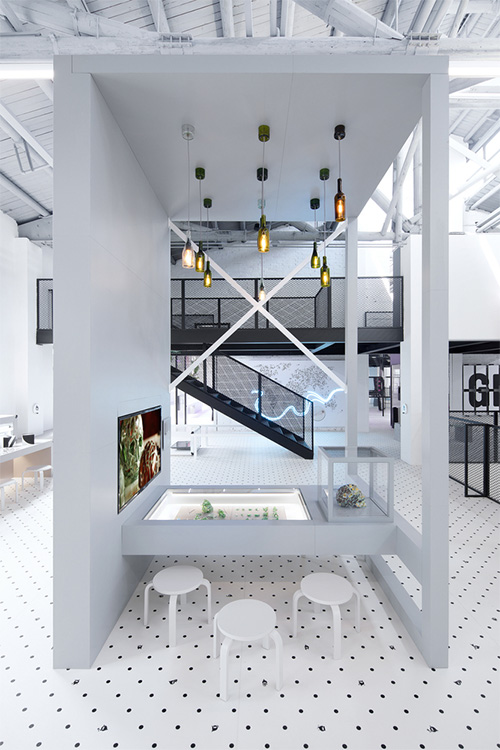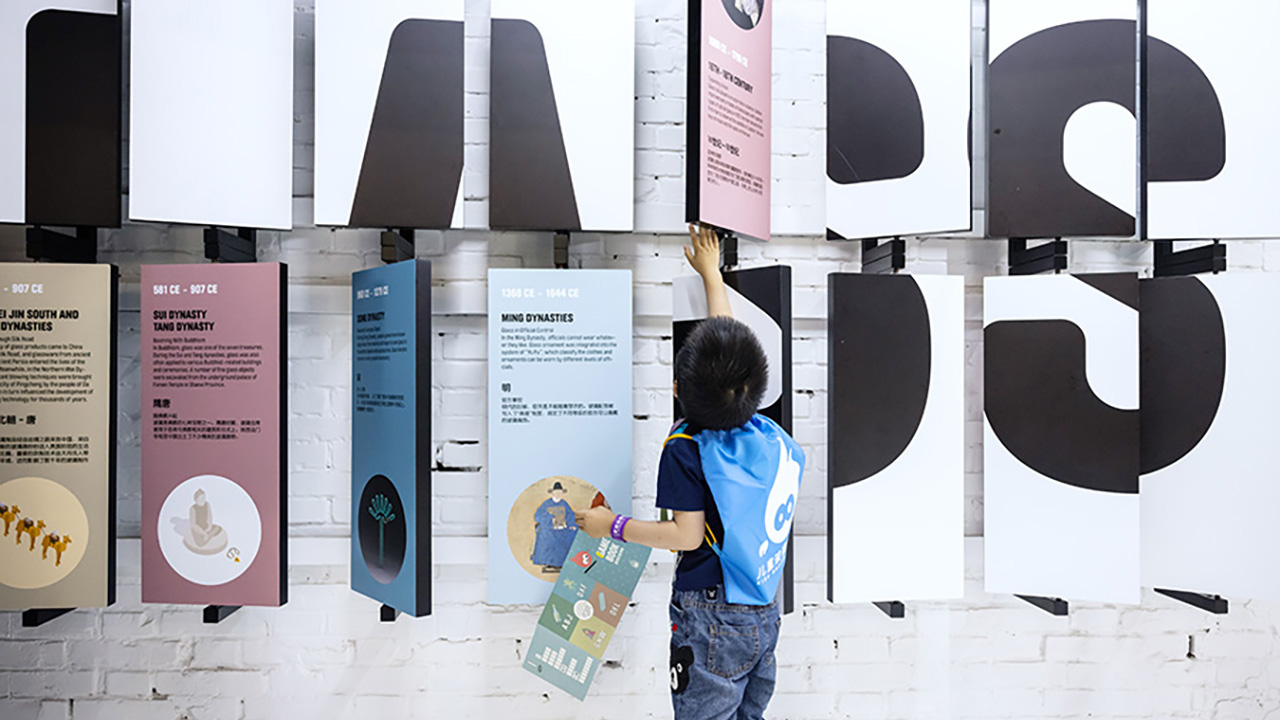In May, the Shanghai Museum of Glass celebrated its 10th anniversary — a milestone that the contemporary design museum marked with the opening of its newly refurbished Kids Museum of Glass 2.0 (and in time for China’s Children’s Day, no less). Billed as China’s first thematic children’s museum, the venue offers young visitors a gamified, scavenger hunt-driven experience through interactive exhibitions that highlight glass’ relationship with technology, art, and culture.
Developed by Coordination Asia, the 2,320 square meter space was, fittingly, a former glassmaking workshop and has been designed with children’s behaviors in mind. Animated light lines, bright colors, and multimedia surfaces run throughout a monochrome interior to capture their attention, and durable tempered glass has been used on most surfaces to withstand the most energetic of play.


Above: Vibrant colors on installations and exhibits stand out amid the museum’s monochromatic environment. Below: An exhibition island showcasing a glassmaker’s workshop. Images: courtesy of Coordination Asia
“When it comes to designing a museum for children, the challenge often lies in finding the balance between what children and their parents desire during the visit,” said Tilman Thürmer, the Curator, Design Director, and Vice President of the Shanghai Museum of Glass and Founder of Coordination Asia. “In our Kids Museum of Glass 2.0, we managed to create a satisfying learning experience that creates a common ground between both sides.”
Interactivity has also been built into installations such as a mirror maze, an exhibition featuring motion-tracking technology, and hands-on displays, allowing children to be active participants in their learning instead of passive students. The abovementioned treasure hunt, which connects 26 exhibits through A-to-Z clues listed in a game book distributed upon entry, further encourages cooperative learning between young visitors and their parents, and free exploration throughout the museum as opposed to a fixed route. At DIY workshops, a revenue generator for the museum, lessons in glasswork such as sandblasting and glass-blowing expand on the institution’s educational mission.
Why it matters

The museum is built throughout with interactive technology to capture the attention of its young visitors. Image: courtesy of Coordination Asia
Museums are no stranger to interactive design, but developing spaces for children is a separate challenge, especially when the attention spans and interests of these young visitors are taken into account. But rather than going with overly cartoonish graphics or garish colors, the minimal, non-childish (“不儿童”) aesthetic of the Kids Museum of Glass 2.0 signals the institution’s intentions in letting kids lead the learning. The direction has earned it steady praise from local media.
“Sometimes one may underestimate how much potential young children have to appreciate culture and art,” Thürmer noted. “We often assume that contemporary art is only for grownups, but in this museum, we want to show that a kids’ museum can be cool, artistic, and kid-friendly at the same time.”
In this, the Kids Museum of Glass 2.0 joins other new and contemporary Shanghai museums such as the Shanghai Astronomy Museum (also known as the Shanghai Planetarium) and UCCA Edge in offering visitors design and technology-driven encounters with the arts and science. The aim is to appeal to the new class of Chinese cultural consumers who are digitally savvier and sophisticated in taste. Going by its aesthetic and educational approach, the Kids Museum of Glass 2.0 has its eye these visitors and potentially, their children too.



